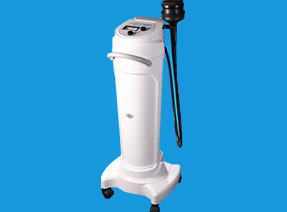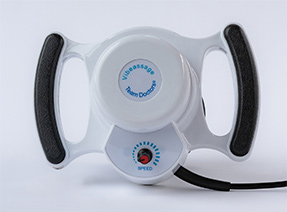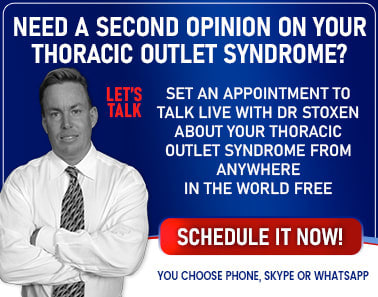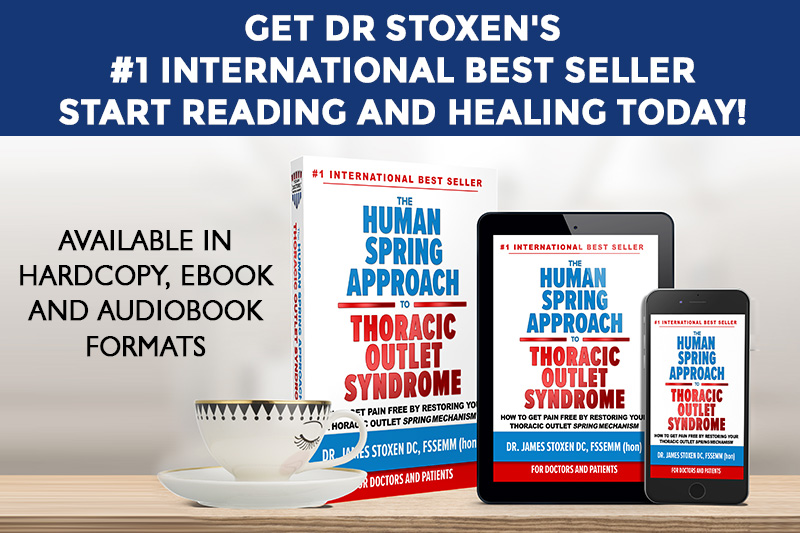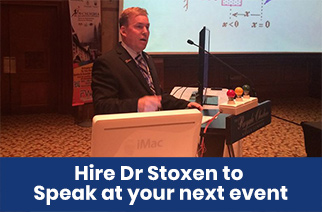THE HUMAN SPRING APPROACH TO
THORACIC OUTLET SYNDROME
by Dr James Stoxen DC., FSSEMM (hon) FWSSEM
GLOSSARY
A
Abnormal gait – a deviation from normal walking gait.
AC joint – The acromioclavicular joint, or AC joint, is a joint at the top of the shoulder. It is the junction between the acromion (part of the scapula that forms the highest point of the shoulder) and the clavicle.
AC separation – A separated shoulder (also known as acromioclavicular separation, AC separation). It is a dislocation of the acromioclavicular joint.
AC sprain – AC joint sprain is a strain or over stretching of the ligament that holds the acromioclavicular joint together at the top of the shoulder.
Acetaminophen – an analgesic drug used to treat headaches, arthritis, etc., and also to reduce fever, often as an alternative to aspirin. Proprietary names include Tylenol.
acetylcholine – a compound that occurs throughout the nervous system, in which it functions as a neurotransmitter.
Acetylcholineesterase – is an enzyme that catalyzes the breakdown of acetylcholine.
acromioclavicular – the acromioclavicular joint, or AC joint, is a joint at the top of the shoulder. It is the junction between the acromion (part of the scapula that forms the highest point of the shoulder) and the clavicle.
active rehabilitation – an exercise program that specifically addresses injury and includes the following components: a detailed assessment including a postural screen, tests for muscle imbalances, as well as an improved functional movement.
Active Release Technique (ART) – is used for treating soft tissue injuries that occur from trauma or repetitive over use.
active trigger point – is a trigger point that is painful without stimulation. Palpation will reproduce the patient’s symptoms.
activities of daily living – refers to such activities as bathing, getting dressed, using toilet facilities, eating and moving place to place.
acupressure – acupressure is an alternative medicine technique similar in principle to acupuncture. It is based on the concept of life energy, which flows through “meridians” in the body. In treatment, physical pressure is applied to acupuncture points with the aim of clearing blockages in these meridians.
acupuncture – a system of complementary medicine that involves pricking the skin or tissues with needles, used to alleviate pain and to treat various physical, mental, and emotional conditions.
acute limb ischemia – acute limb ischemia occurs when there is a sudden lack of blood flow to a limb. Acute limb ischemia is caused by embolism or thrombosis, or rarely by dissection or trauma. Acute limb ischemia is a highly treatable condition; however, delayed treatment can result in permanent disability, amputation, and/or death.
adaptation – a change or the process of change by which an organism or species becomes better suited to its environment.
adenosine triphosphate – the basic form of energy our muscles need to function.
adjusting – a means (such as a mechanism) by which things are adjusted one to another
adjustment – manually applying thrusts of varying speed and forces to a joint to change its position or mobility.
Adsons Test – a test for thoracic outlet syndrome where the examiner is checking the integrity of the blood flow in the arm while placing radial pulse on the affected side.
adult flat foot deformity (posterior tibial tendon dysfunction, posterior tibial tendon insufficiency, dorsolateral peritalar subluxation) – acquired adult flatfoot deformity (AAFD) is a progressive flattening of the arch of the foot that occurs as the posterior tibial tendon becomes insufficient.
adult stem cells – adult stem cells are undifferentiated cells, found throughout the body after development, that multiply by cell division to replenish dying cells and regenerate damaged tissues.
aesthetics medicine – aesthetic medicine is an inclusive term for specialties that focus on improving cosmetic appearance.
agility drills – drills or exercises that are used in the aim of improving sports agility, which is the ability to change direction and accelerate while in motion.
Alexander Technique – shines a light on inefficient habits of movement and patterns of accumulated tension, which interferes with our innate ability to move easily and according to how we are designed.
alternative medicine – a large and diverse set of systems of diagnosis, treatment, and prevention based on philosophies and techniques other than those used in conventional Western medicine.
Alzheimer’s disease – a progressive mental deterioration that can occur in middle or old age, due to generalized degeneration of the brain. It is the most common cause of premature senility.
amputation – amputation is the removal of a limb by trauma, medical illness, or surgery.
analgesic – analgesics are those drugs that mainly provide pain relief.
analgesic drug therapy – therapy to reduce pain-employing medications, specifically analgesics.
anatomist – an expert in anatomy; a dissector.
anesthesia – loss of sensation with or without loss of consciousness The patient was given intravenous medication to induce anesthesia.
Anesthesiologist – a doctor who specializes in anesthesia and anesthetics.
aneurysm – an abnormal blood-filled bulge of a blood vessel and especially an artery resulting from weakening (as from disease) of the vessel wall.
angina pectoris – a disease marked by brief sudden attacks of chest pain or discomfort caused by deficient oxygenation of the heart muscles usually due to impaired blood flow to the heart.
anomalous first ribs (neck ribs, cervical ribs) – an extra first rib.
anterior scalene muscle – A muscle with origin from the anterior tubercles of the transverse processes of the third to the sixth cervical vertebrae, with insertion into the scalene tubercle of the first rib and whose action raises the first rib.
anterior scalene syndrome – anterior scalene syndrome is not a syndrome. The scalene myofascial pain syndrome is a regional pain syndrome wherein pain originates over the neck area and radiates down to the arm.
anti-aging medicine – The medical specialty that focuses on the earliest detection, intervention or treatment, prevention, and reversal of age-related dysfunction, disorders, and diseases.
anticoagulant – a substance that hinders the clotting of blood.
anticoagulation – the administration of an anticoagulant drug to retard coagulation or clotting of the blood.
anticoagulation medication – anticoagulants, commonly referred to as blood thinners, are chemical substances that prevent or reduce coagulation of blood, prolonging the clotting time.
anticonvulsant – a diverse group of pharmacological agents used in the treatment of epileptic seizures.
anticonvulsive – a diverse group of pharmacological agents used in the treatment of epileptic seizures.
antidepressant – a drug used to treat depression.
antiplatelet agent – Medications that, like aspirin, reduce the tendency of platelets in the blood that may clump and cause clotting.
apical hematomas – a solid swelling of clotted blood within the tissues of the lung.
arm adduction – when the arm is moved toward the body.
arterial compression – when an artery of the body is compressed.
arterial reconstruction – when an artery is blocked or damaged, a vascular surgeon may replace the damaged section with a new vessel, known as a graft; a graft can be either synthetic or tissue. A vascular grafting procedure is usually done through traditional open surgery, and requires a hospital stay.
arterial thoracic outlet syndrome – arterial thoracic outlet syndrome is a result of compression of the subclavian artery as it travels, between the anterior and middle scalene muscles, over the first rib and underneath the clavicle.
arterial thoracic outlet syndrome (arterial TOS) – the result of compression of the subclavian artery as it travels, between the anterior and middle scalene muscles, over the first rib and underneath the clavicle.
arthritis – painful inflammation and stiffness of the joints.
arthroscopic surgery – Arthroscopy is a minimally invasive surgical procedure on a joint in which an examination and sometimes treatment of damage is performed using an
arthroscope, an endoscope that is inserted into the joint through a small incision.
artificial cardiac pacemaker – or a medical device, which generates electrical impulses delivered by electrodes to contract the heart, muscles and regulate the electrical conduction system of the heart.
Ascending Phlebography – a special dye is injected into the bone marrow or veins injected constantly via a catheter. This dye improves the visibility of the veins when the patient is x-rayed. Phlebography enables the condition of the veins to be assessed. The test can help a physician locate and determine the extent of blood clots in the vein.
aspirin – a synthetic compound used medicinally to relieve mild or chronic pain and to reduce fever and inflammation.
asymmetric reflexes – when reflexes are of unequal strength from the left to the right side of the body.
atherosclerosis – a process of progressive thickening and hardening of the walls of medium-sized and large arteries as a result of fat deposits on their inner lining.
avulsion fracture – a bone fracture that occurs when a fragment of bone tears away from the main mass of bone as a result of stress.
axilla – the space below the shoulder through which vessels and nerves enter and leave the upper arm; a person’s armpit.
axillary artery – Starts at lateral border of the first rib from the subclavian artery. It then passes through the axilla in the armpit where the artery leads into the arm to become the brachial artery.
axillary vein – extends from the level of the first rib to the sternal end of the clavicle where it unites with the internal jugular vein to form the brachiocephalic vein.
axillary-subclavian vein thrombosis – an abnormal condition in which a clot develops within the subclavian or axillary vein following strenuous exercise.

Meet Dr James Stoxen DC., FSSEMM (hon)
President, Team Doctors® Masters Academy
www.drstoxen.com
Dr Stoxen’s Curriculum Vitae
Stay connected to our thoracic outlet syndrome social media sites
1.1k
Members

READ THESE CHAPTERS OF DR STOXENS BOOK FREE HERE!
ARTICLE CATEGORIES
- Testimonials (13)
- Success Stories (13)
- Failed TOS Surgery (1)
- Thoracic Outlet Syndrome (11)
- Compartment Syndrome – Forearm (5)
- Shoulder Replacement Surgery (1)
- Cervical Discectomy (1)
- Cervical Fusion Surgery (1)
- What is TOS? (3)
- Thoracic Outlet Anatomy (1)
- Thoracic Outlet Engineering (1)
- Causes Of TOS (6)
- The TOS Examination (1)
- Diagnostic Tests for TOS (1)
- What Mimics TOS? (1)
- Paget-Schroetter Syndrome (2)
- TOS Surgery (2)
- Posture Tips (1)
- Self Treatment (1)
- What doesn’t work and why? (1)
- What works and why? (1)
- Stretches for TOS (1)
- Exercises for TOS (1)
- Surgery for TOS (1)
- Case Studies (2)
- Chapter Reviews (10)
- Uncategorized (16)
VIDEO TUTORIALS
Subscribe to our newsletter
Team Doctors® Master’s Academy
Professional Development Courses
Launching January 1, 2022!
Team Doctors® Master’s Academy
Patient Self-Care Workshops
Launching January 1, 2022!

